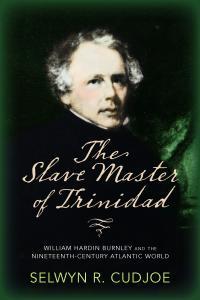The Museum of African American History
By Dr Selwyn R. Cudjoe
January 08, 2019
"The past is all that makes the present coherent."
— James Baldwin, Notes of a Native Son
It was a rainy afternoon in Washington D.C., the Friday after Christmas, when I paid a chance visit to the National Museum of African American History & Culture. I had heard so much about this fantastic museum and the attention it has drawn throughout the U.S. (United States) that I did not expect to get a ticket to explore its wonders. I took my chances and was lucky to enter its gates. I didn't regret it. It was one of the most impressive museums I have ever seen.
It is fitting that a museum that celebrates the black experience in the U.S. should be placed on the National Mall adjacent to the Washington Monument and the White House. Lonnie G. Bunch III, the Founding Director of the Museum, says it "is not only a place that honors the nation's legacies of freedom and equality but also one that helps Americans to remember. By remembering, we stimulate a dialogue about race in America and help to foster a spirit of reconciliation and healing."
The museum takes a chronological look at African American history from fifteenth-century West Africa and Europe into the U.S. of the twenty-first century. This chronology is divided into three periods: from slavery to freedom, from institutionalized segregation through the Civil Rights Movement, and the struggle to redefine the U.S. since 1968.
I saw only the first part of the collection, "The Journey from Freedom," in the David M. Rubenstein History Gallery. It announced that in the 14th century slavery was not based on the perception of race, a point that Dr. Eric Williams makes in Capitalism and Slavery. It says that many of our forebears were brought from "a state of innocence and freedom, in a barbarous and cruel manner, and conveyed into the state of horror and slavery."
It noted that the Transatlantic Slave Trade that brought many of us to the New World was "the largest forced migration of people in world history. Profits from the sale of enslaved humans and their labor laid the economic foundation for Western Europe, the Caribbean and the Americas." The 20 million pounds the British paid to the planters to free their human cargo is worth about 2.4 billion U.S. dollars in today's currency.
This gallery gives a special place to Toussaint Louverture who led the Haitian revolution (1791-1804) that set in motion the liberation of enslaved people during the 18th century. C. L. R. James has written about the Haitian struggle (1791-1804) in The Black Jacobins.
The collection inscription says: "Toussaint Louverture said that he was 'born a Slave, but nature gave (him) the soul of a free man.' Throughout his life he fought for freedom... Well educated, he could speak both French and Kreyol. During the Haitian Revolution he used his military, political and economic knowledge to govern his country."
The collection also reminded us about the importance the Rafa Drum played during the revolution. Imbued with a powerful life force, it was "a sacred instrument used in vodou ceremonies. Drummers play rhythms to call specific Iwa, or ancestral spirits, who aid in the struggles of daily life. Drumming was associated with Slave rebellions across the Americas and whites banned both drums and ceremonies."
African Americans are central to the American experience. Not only did they (together with Africans from the New World) lay the foundation for the economic development of Europe, they also built the first buildings in which the U.S. cradled its democracy. "Enslaved African Americans, leased out by their Slave owners, mined sandstone from local quaries and built the United States Capitol, the White House, and the Smithsonian Castle. Congress, the people's institution that guarded the people's freedom, held sessions in a building constructed by forced labor. Americans witnessed the daily march of shackled Slaves sold South in the capital city."
One is not sure how the present occupant of the White House feels about the enslaved people who built the house that he inhabits and the Capitol in which he exercises his power, but we know he luxuriates in the comforts they provide. It takes a visit to the National Museum of African American History and Culture to understand how Americans of all hues are indebted to black Americans.
No one who enjoys democratic freedoms in these Americas should miss the lessons to be learned from the 34,000 items in this collection or even the magnificent structure (selected as the Beazley Design of the Year 2017) of which Ghanaian David Adjaye was the lead designer and Philip Freelon was the lead architect. Even this physical structure melds into this archetypal story of the African freedom movement.
No one should miss this wonderful display of human ingenuity and persistence that took close to one hundred years to see the light of day. It started in 1917 when African American Civil War veterans sought to establish a memorial building on the National Mall "to commemorate the men and women of our Race whose deeds entitle them to honorable mention."
This collection embodies everything these veterans hoped for and reminds us of our people's unquenchable desire to build a better world.
Professor Cudjoe's email address is scudjoe@wellesley.edu. He can be reached @ProfessorCudjoe.
Share your views here...

The Slave Master of Trinidad by Dr. Selwyn R. Cudjoe
|

